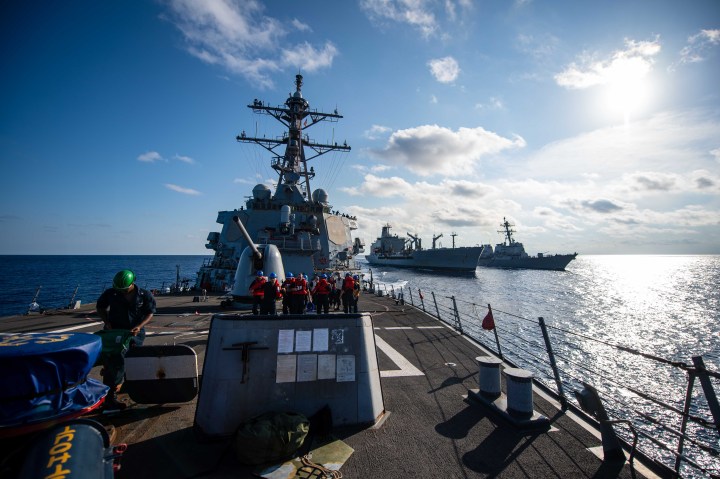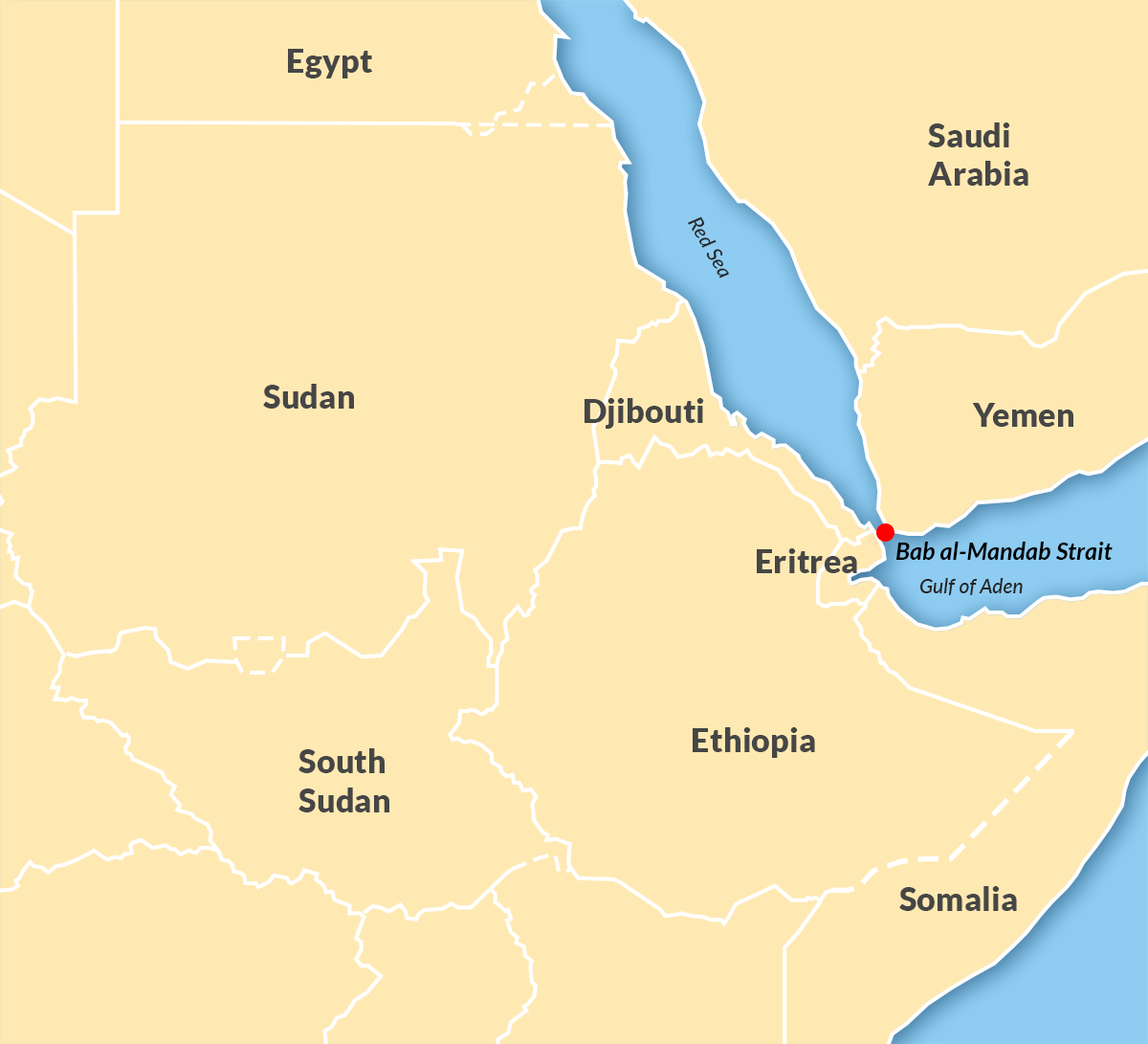ISS TODAY OP-ED
Red Sea crisis gives African economies little room for manoeuvre, threatens long-term disruption

Africa will feel the effects, but smart countries could derive some benefits from the Red Sea turmoil.
Still reeling from the effects of Covid-19 and the Ukraine war, African countries face yet another geopolitical hurdle with the Red Sea crisis and its potentially significant economic ramifications.
While current disruptions will primarily affect trade routes and supply chains between Europe and Asia, African countries won’t escape the contagion. But smart countries could derive some commercial and strategic benefits from the turmoil.
The Red Sea’s importance cannot be underestimated. Approximately 12% of global trade and 30% of global container traffic passes through this maritime zone annually. And with drought in the Panama Canal and the Black Sea blockade, the current situation further complicates shipping dynamics. Already, over 18 shipping lines are reportedly avoiding the Suez Canal.
Interestingly, financial market reaction has thus far been muted. One reason may be that the conflict was expected to be ringfenced to the United States (US), United Kingdom (UK) and Yemen’s Houthi rebels. Markets may have anticipated a brief conflagration rather than a wider war drawing on other proxies.
Commodity prices have reacted less than expected, as reflected by oil benchmarks, with attention focused on other issues such as the US Fed’s rate cycle. Insurance payouts to shipping companies may have also delayed price changes by absorbing the burden that would have otherwise been passed on to consumers.

Red Sea and Bab-el-Mandeb straight (Source: ISS)
However, there are risks of complacency. Sabre rattling between Iran, the US and UK could harden Houthi aggression and increase conflict in places such as Iraq and Lebanon. And there are other wedge issues in the region. Tensions between Somalia, Ethiopia and Somaliland over the port deal in the Bab-el-Mandeb straight could add another dimension to the poly-crisis. Egypt’s willingness to intervene on Ethiopia’s side makes this situation even more pressing.
Yet Egypt must act more assertively in the region, as must Djibouti. Maritime fees constitute much of the two countries’ budgets, so disruptions to maritime trade along the Red Sea are a big fiscal dent. Egypt alone is losing more than $400-million monthly in trade facilitation fees.
Economic disruption and long-term impact
Continued instability in the Red Sea may induce shocks to inflation, mostly through cost push vectors. Goods requiring inputs from Asia and the Middle East may spike in cost. Africa, a key importer of final goods, will be at the frontline of such dynamics, adding to already sticky prices induced by the Ukraine conflict.
A commodity price rally may also induce a second price shock. Longer shipping journeys mean more fuel demand; constraints to shipping in the Red Sea mean more supply constraints. Together, that means limited availability and higher costs per unit. Until talk of a potential Israel-Hamas ceasefire, oil prices were steadily rising since the conflict began. Without negotiations, they may creep towards the $75 per barrel mark witnessed in late January.
This would be highly consequential for African economies. It may delay a much-awaited monetary normalisation path by the US Fed. Sensing that inflation is tilted towards the upside, the US Fed may stall its rate cuts. This would halt the virtuous cycle that the policy adjustment was due to catalyse.
There could still be a window of opportunity for select countries, as evidenced by recent issuances in Ivory Coast and Benin. However, others may have to pay premium prices for international debt — barring the few with International Monetary Fund (IMF) backstops, exceptional creditworthiness and favourable yields. This may raise repayment risks, in a year when Africa faces multiple maturities.
High inflation expectations and a hawkish Fed may also prompt African central banks to delay their cutting cycles. This may undermine a growth rebound in 2024 touted by the likes of the IMF and World Bank, and which is necessary to balance macroeconomic and developmental markers.
Irrespective of how the conflict ebbs and flows, reprieve may not be forthcoming for African economies. Entrenchment of new patterns and the psychological effects of security disruptions means re-adjustment to normal practices will be slow.
Nowhere to hide
The crisis has invoked a feeling of déjà vu — it’s Ukraine 2.0. However, this time fiscal and monetary tools for African policymakers to withstand another major shock are limited. Budgets have been stretched by coronavirus interventions, escalating debt servicing obligations and lack of external financing.
Meanwhile, benchmark rates are at historic highs, with further increases likely to sap the fragile demand side activity that remains. The political climate is also more delicate than in early 2023. With around 20 elections this year, policymakers must straddle a thin line between insulating economies from growing risks, while maintaining public sentiment.
The conflict isn’t without geopolitical risks. As with Russia/Ukraine and Israel/Palestine, African states may be forced to take sides between the US and Iranian-linked axis involved in the crisis. Egypt, arguably most affected by Houthi attacks, may be pressured to assist the US and UK diplomatically. Iran’s alleged involvement in the conflict also places BRICS member states in a conundrum, especially those intent on retaining a measure of diplomatic dexterity, such as South Africa.
Volatility in the Red Sea appears to have resurrected the spectre of maritime piracy too, with incidents increasing since late December. With ships forced to change course and military resources oriented towards combatting the Houthis, a vacuum could emerge for pirates to exploit.
As with every crisis, there will be winners and losers. Among those benefitting are Mauritius, Madagascar, and to some extent Namibia. All three are situated at strategic junctures along the maritime route between Asia and Europe, making them ideal servicing stations.
Read more in Daily Maverick: Red Sea danger is spurring global oil buyers to go local
South Africa would arguably profit most, given its location and sophisticated port and logistical infrastructure. However, potential earnings have been foregone due to Transnet’s failings. Countries along the Indian Ocean coastline such as Kenya, Tanzania and Angola are better endowed than Mauritius, Madagascar and Namibia — but they’re outside traditional shipping lanes around the Cape. Mozambique is arguably better positioned but the shift in global trade comes as the country starts its port revamps.
The Red Sea crisis is the latest among myriad obstacles African states must navigate. Risks associated with the conflict are plenty, especially given the continent’s vulnerable economic position and the uncertainty surrounding election season. DM
Menzi Ndhlovu, Signal Risk Senior Country and Political Risk Analyst, Daniel Van Dalen, Signal Risk Country Risk Analyst and Ronak Gopaldas, Institute for Security Studies (ISS) Consultant and Signal Risk Director
First published by ISS Today.
















 Become an Insider
Become an Insider
Comments - Please login in order to comment.